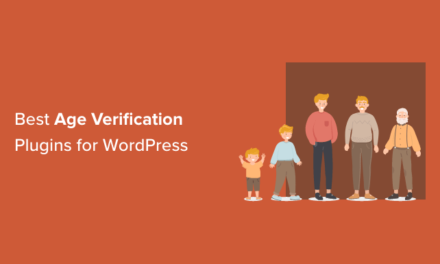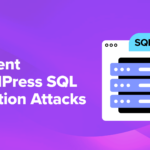If you’re in the field of web development, you might want to pay attention to these industry-predicted trends.
There are a lot of design and development trends floating around the internet. Researching this topic, I came across articles that listed upwards of 50. While many of these are legitimate topics of interest, most of them weren’t headline worthy.
So how did I land on a top 6? First and foremost, the topic had to be relevant and prevalent (after all, that is the definition of trendy). In addition, they had to strike me as important and valuable when it comes to web development specifically.
If these aren’t already on your radar, chances are they will be soon. Getting a good grasp on these noteworthy topics can really help you elevate your web development business.
Here’s a quick overview of what we’ll cover:
Since AI is a common denominator in all of the burgeoning tech we’ll look at in this article, it seemed a brief history on the topic would be in order.
A Primer on AI
The very first notions of AI came in the form of myths and rumors; artificial beings endowed with intelligence or consciousness by some master craftsmen. You know, your typical origins story.
Philosophers and thought leaders in other disciplines continued to discuss the essence of what would become AI, and in the 1940s the first programmable digital computer was created. However, with the ability only to execute commands (not store them), it lacked the prerequisite for intelligence: formal reasoning.
The ’50s saw mathematician Alan Turing’s Theory of Computation, suggesting it might be possible to construct an electronic brain. He postulated that machines could use information to solve problems and make decisions, much like humans, and in 1956, the field of artificial intelligence research was founded as an academic discipline.
Through the ’60s and ’70s, AI thrived, with computers able to store more information while simultaneously becoming faster, cheaper, and more accessible.
AI continued to pick up speed in the ’80s and ’90s. Learning techniques and expert systems were introduced and popularized, while governments and industries poured billions of dollars into revolutionizing AI. Alas, the loftiest goals didn’t come to fruition, and investors withdrew funding.
During the ’90s and 2000s, many of AI’s landmark achievements were met, despite government funding and public interest taking a backseat. In 1997, IBM’s chess playing computer program, Deep Blue, defeated the reigning world chess champion grandmaster. Later that same year, Windows implemented speech recognition software.
Since the turn of the century, AI has continued to prosper. By 2016, AI-related hardware and software surpassed the $8 billion mark, and the New York Times deemed the interest in AI “a frenzy”.
In today’s era of “Big Data” (characterized by volume, velocity, variety, value, and veracity), AI continues to propel forward, at times its capabilities not only reaching but surpassing computational power. (See Moore’s Law.)
With AI at the forefront of almost any tech you can think of, the possibilities seem endless, and the opportunities exciting.
So, without further ado…
The Top 6 Trends in Web Development
Let’s get straight to the heart of the matter. Here are the top 6 trends in web development for 2023, starting with…
AI Chatbots
AI Chatbots, or AI Assistants, are extremely prevalent in today’s world, and expected to grow substantially. In fact, SEMRush predicts a 33.2% year-on-year growth rate from 2020 to 2027.

AI chatbots help millions of people and businesses perform operations faster by using text or voice prompts. They also offer 24/7/365 availability, which is crucial to providing ready access to customers around the world in every time zone.
Considered to be one of the most influential technologies that will shape the future of web development, AI chatbots are smarter than regular chatbots. Due to use of natural language processing (NLP) and machine learning (ML) technologies, they better understand what the user wants, then tailor that experience to the individual.
AI chatbots can engage in complex conversations easily without the human intervention quotient. Because they analyze behavior and solve problems, their AI learning algorithms become smarter with every query they handle.
The impact of AI chatbots is substantial. Simply put: Chatbots enhance and streamline the customer experience. More specifically, they’ve been shown to lower customer complaints (i.e., improve satisfaction), improve lead capture and contact flow, and increase sales. And it goes with saying that the more customers enjoy an online experience, the more likely they are to purchase from the company providing it.
Web developers can benefit from AI-powered chatbots in a couple of ways, like replacing navigational elements on websites to make development easier, or integrating chatbots with messengers, so fewer applications need to be developed.
With customer engagement being a key indicator of business success, you really can’t afford to ignore the benefits of AI chatbots, especially as they become even more sophisticated in the near future.
Voice Assistant
We are currently in the midst of the voice search era. Every smartphone is equipped with digital voice assistants, while their home-bound counterparts (smart speakers) are skyrocketing in popularity.
The most common ways to interact with voice assistants is through smartphones, smart cars, and smart speakers – in that order. The four biggest providers of voice assistants are Apple’s Siri, the eponymous Google Assistant, Amazon’s Alexa, and Microsoft’s Cortana.
Though there are a vast number of reasons that people use voice assistants, top tasks include making calls (or sending texts), getting directions, playing music, and finding nearby businesses.
Recent data in The Global State of Digital 2022 reveals that 22.5% of users worldwide use voice assistants each week on the internet, spanning a vast range of ages (16-64 years).

Additionally, the voice assistant application market size is projected to grow from 2.8 billion in 2021 to 11.2 billion USD by 2026, at a Compound Annual Growth Rate (CAGR) of 32.4%.
How did voice assistants become so popular? Partly due to ease of use; basic communication skills are already present in humans, so both kids and seniors can adapt to voice interfaces with a minimal learning curve. Secondly, digital voice assistants are commonplace on smartphones, so the tech is within easy reach at no additional cost.
Voice Assistant technology is also being implemented to make sites more accessible for those who are hearing and sight-impaired.
Because of their massive use, voice search results will start to rank higher and more prominently on search engine result pages. Which means companies will place emphasis on optimizing their products and services with voice search at the forefront.
This provides a good deal of opportunity for web developers when it comes to voice assistant technology and incorporating it into the development process.
A good place to start taking advantage of this trend is by optimizing structured data for voice search in WordPress.
Progressive Web Applications (PWAs)
Progressive Web Applications (aka PWAs) are web applications that run independently of a browser and interact with the customer as a native app. Some prime examples are Google Maps, Starbucks, and Spotify.

PWAs are currently among the top trends in web development, and expected to fully replace traditional web apps in the near future.
Using a single codebase, developers can code Progressive Web Apps to work with modern APIs, delivering enhanced capabilities and reliability that can reach anyone – regardless of their location or what device they’re on.
PWAs improve the overall user experience because of these key benefits:
- fast
- relatively low cost
- quick to launch/distribute on the market
- install quickly and automatically update
- save on device power and storage
- work well offline (or with bad connections)
- boost website engagement/conversion
- maintenance and updating is seamless
- fully immersive experience
Another plus for PWAs is that Google prioritizes web apps that load quickly on mobile devices. Because they reduce page load time, PWAs dramatically improve search result rankings.
According to Statista, mobile sales in the global market are projected to reach $8.1 billion in 2026. That means people will likely choose their mobile devices over their non-mobile counterparts for most of their purchasing needs, leaning directly into what PWAs provide.
PWAs are responsive, secure, easy to install, scalable, and reliably connected, making them a perfect fit for many B2B and B2C uses.
Tip: Do you use the Avada theme on client sites? Then check out our article on how to speed up and optimize Avada using our Smush and Hummingbird plugins with Avada’s own PWA plugin.
Single-page Applications (SPA)
Single-page applications (or SPAs) are one of the most critical technology trends in web development today.

An SPA is a JavaScript-based web application. Instead of loading separate HTML pages from a server, it loads a single, specific page to visitors, dynamically updating its content without refreshing the page.
Social media sites (think Facebook and Twitter), as well as Gmail and Google Drive, are among the most well-known SPAs.
Since most devices support it, SPA technology is cross-platform in nature. They even perform well with a slow internet connection or when offline, loading cached content when users launch the site. SPAs are also better equipped to work without server-side codes infused with API technology.
All of this means that SPAs operate fast and keep users attention, leading to greater engagement and reduced bounce rates.
SPAs are easy to create, cost-effective, and consume less server space, making them practical for both end users and developers.
Tip: Feel like getting into SPA and reading some relaxing articles to get you in the mood? Then check out these bubbly tutorials:
- How To Create a Hybrid Single Page App in WordPress with VueJS
- When to Use the WordPress REST API – and When Not To
- JavaScript, WordPress and the REST API: Sorting Fact from Fiction
Internet of Things (IoT)
Long foreshadowed as the wave of the future, the Internet of Things (or IoT) is a movement where objects are given network connectivity that didn’t historically have it, in order to send and receive data.
IoT is one of the most rapidly emerging technologies in web development, with Statista indicating the number of IoT-connected devices will reach more than 29 billion by 2030.

IoT objects can range from home devices, to appliances, and wearable technology, as well as cameras, sensors, and signaling equipment – all helping to meet user needs more quickly.
Furthermore, IoT can make many otherwise non-connected devices accessible from your phone.
A popular example would be the Google Nest package of products, which provides users with features like media, alarms, lights, and more, simply by using their voice.
IoT-connected devices have constant data transfers, allowing companies to engage users with their services at incredible speeds, while creating a personalized experience.
IoT is scalable, as it distributes and collects data but isn’t dependent on the volume of data. It is also reliable, providing accurate results in an expedited fashion. Additionally, it employs powerful security tech to protect business and user data.
IoT’s smart ecosystem provides a wide range of benefits that can be incorporated into websites and mobile apps, analyzing customer behavior to improve the user experience while providing developers with insights.
Motion UI
Motion UI, under the umbrella of motion design, is expected to be a major web design trend in the coming year. The principle is minimalistic design coupled with sophisticated interactions that look amazing and draw the user’s attention.
Motion UI in its glory. Source: Taras Migulko for emote_agency on Dribbble.
Motion UI is a powerful front-end technology that can create customizable, animated UI elements and CSS transitions using SASS libraries.
Popular motions include background animations, animated charts, and modular scrolling, and transition actions like sliding, spinning, bouncing, etc. All of these can cater to individual styles, and aim to catch and keep users’ attention.
Motion UI is generally compatible with all web technologies, and allows flexibility in placement on websites. You can apply these transitions to overlays, off-canvas menus, modals, and more.
Humans are instinctively compelled to follow motion and look for visual clues. It’s also been proven that motion makes a greater impact than static images, meaning we’re much more likely to remember content displayed through movement.
Motion UI is best used to tell a story and invoke emotion, making it a powerful tool in driving user engagement.
Tip: Looking for Motion design in UI inspiration? Check out these websites with great examples. Also, see this moving article for a Motion UI plugin you can use to make your WordPress sites jump.
Trends or Tools of the Trade?
We’ve been following trends like AI chatbots, voice assistants, PWAs, SPAs, IoT, and Motion UI for years; see how they’ve picked up steam since 2018, 2019, and 2020.
2023 will witness a lot of advancements in the field of web development, and will transform the way the world does business – including the way you interact with your clients.
Adopting the latest web dev trends will allow you to stay competitive, by offering the most popular and cutting-edge designs and services.
If you are looking to build your WordPress sites on the sturdiest foundation, sign up for our newsletter to hear about the latest and greatest developments in the world of WordPress, and consider membership and hosting with WPMU DEV. With our suite of pro plugins, 5-star support, and a money-back guarantee, you’re sure to stay ahead of the curve.











